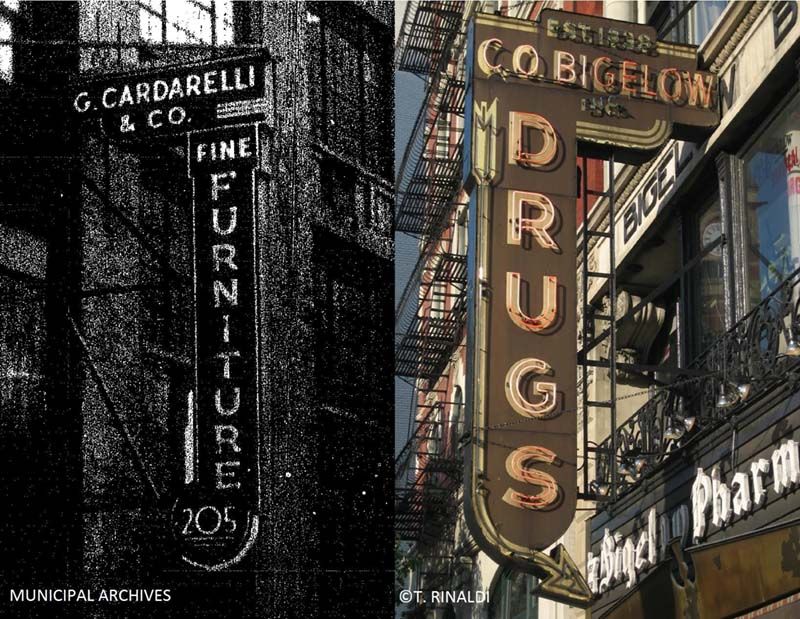Last Chance to Catch NYC's Holiday Notalgia Train
We met the voices of the NYC subway on our nostalgia ride this weekend!



While Greenwich Village’s iconic neon signs largely advertised businesses in the 1920s and 30s, they’ve gradually disappeared with the advent of fluorescent lighting and other forms of outdoor advertising. In a mission to document them before they’re gone for good, author Thomas Rinaldi set out on a five-year quest, photographing and cataloguing the remaining signs in his book, New York Neon

.
He now runs Untapped Cities’ tour of West Village’s Vintage Neon Signs to shed light on the history of these flashy displays, which fell out of favor in the 1960s. Our next tour kicks off tonight, May 18th at 7pm.
Tour of West Village Vintage Neon Signs!
As a sneak preview, we’re delving into the history of an iconic West Village business, C.O. Bigelow, which features a notable neon sign on its storefront.
Established in 1838 by Dr. Galen Hunter, C.O. Bigelow was originally located at 102 Sixth Avenue. At the time, however, it was called the Village Apothecary Shop until an employee, Clarence Otis Bigelow, purchased the shop in 1880 and moved it to its current location on 414 Avenue of the Americas in 1902.
According to Rinaldi, in his book: “…the present building, completed in 1902, is an unusually elegant interpretation of the prevailing neoclassical vocabulary of its day. There is nothing neoclassical about the streamlined neon sign, installed three decades later, but the two seem happily in agreement today.”
Interestingly enough, C.O. Bigelow has a history of passing ownership from employer to employee, and since 1939, it’s been operated by the Ginsberg family. It’s described as a “place of discovery, conversation, learning, laughter and community,” where customers can come across an inventory of nearly 500 beauty brands, homeopathic remedies, cleaning products and an assortment of “objects and curiosities.”
In its nearly two-century history, notable visitors include Thomas Edison, who “soothed a sore finger” there after reportedly burning it on a lightbulb, as well as Samuel Clemens (Mark Twain) and Eleanor Roosevelt. (You can even spot Clemens’ name on the ledger that is occasionally displayed in the store.)
“It was a hangout for people from all walks of life, explained current owner Ian Ginsberg. “There’d be society types next to Rockettes.”
In the 1920s, a soda fountain was added to the store and an all-night counter provided room for cabbies to take breaks; they’ve since been removed, but director John Waters and American rock band, New York Dolls, were regulars there. If you’re lucky, you might even spot some A-listers casually pursing through the aisles today (ahem…Jennifer Aniston).
Expectedly, a lot has changed since the pharmacy’s establishment in 1838. However, The New York Times notes that the brass finishes, wood shelving and gas chandeliers still remain intact, and fixtures like scrolling ladders and chemists bottles all help to teleport visitors back in time. Today, its legacy is honored with the Village Award, presented to the store by the Greenwich Village Society for Historic Preservation in 2002.
For more history on C.O. Bigelow and a dozen other vintage signs, join us for our tour, taking place tonight:
Tour of West Village Vintage Neon Signs!
Next, check out the History of the Casa Oliveira Liquors Neon Sign and read more about “New York Neon.“
Subscribe to our newsletter